Testing the soil for bonsai is crucial in maintaining the well-being and long-term survival of these small trees.
Bonsai, the traditional practice of growing tiny trees in pots, requires meticulous attention, with soil quality being of utmost importance. Although elements such as sunlight, hydration, and trimming are essential in the care of bonsai, the soil they are grown in frequently dictates their general health and vitality.
The fundamental characteristics of a tree, including how it absorbs nutrients and retains water, are significantly impacted by its soil’s makeup. Therefore, for anyone passionate about bonsai, gaining knowledge about and enhancing the soil conditions is fundamental.
The Science Behind Bonsai Soil
Exploring the complexities of growing bonsai, it becomes clear that not all soils are the same. An ideal bonsai soil mix is a meticulously crafted combination specifically made to meet the unique requirements of these small trees, distinguishing it from ordinary garden soil.
Garden soil, familiar to many, is a diverse mix full of organic material, microbes, and various minerals, created to nourish a broad array of plants in open settings. This type of soil holds moisture for long periods, which might not provide the necessary drainage for bonsai trees, potentially causing root rot and other issues.
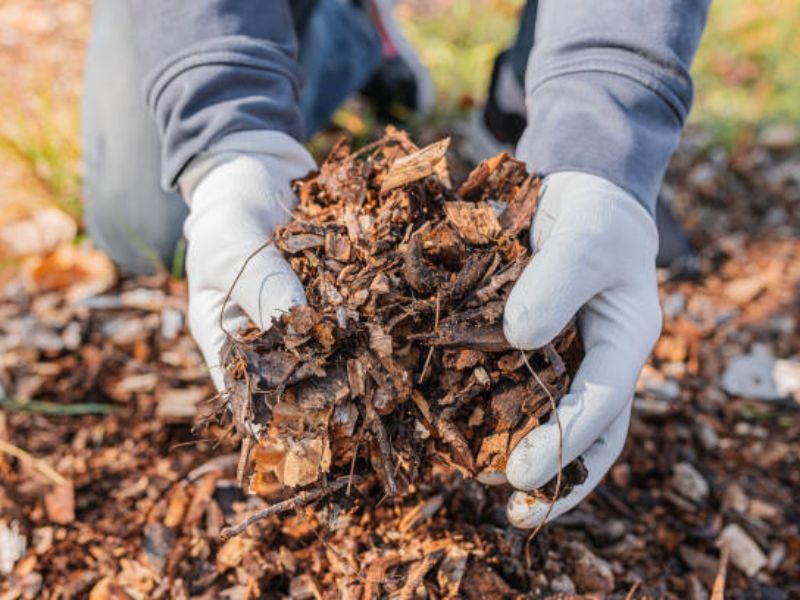
In contrast, bonsai soil mixes are designed to ensure excellent drainage, air flow, and nutrient distribution. The inclusion of organic materials such as pine bark or compost helps retain moisture, steadily hydrating the bonsai’s roots, while inorganic components like pumice, lava rock, or akadama facilitate rapid drainage to avert waterlogged conditions that are harmful to these trees.
Additionally, there’s a widespread belief that bonsai soil is just a finer variant of potting soil, but this is incorrect. Potting soil, rich in organic content and intended for container plants, tends to retain too much water for bonsai. The precise equilibrium needed by bonsai, with the perfect mix of moisture and air for their roots, highlights the specialized nature of bonsai soil mixes.
Why Test Your Bonsai Soil?
Exploring why it’s crucial to test your bonsai soil reveals that the very bedrock of bonsai cultivation—not just the artistic trimming and shaping—is the soil. Understanding and managing this element is critical.
So why is testing your bonsai’s soil so important?
The Importance Of Soil pH Level
The essence of soil testing lies in determining its pH level, which measures the soil’s acidity or alkalinity. This factor is pivotal as it influences the availability of nutrients to the plant. A slightly acidic pH, usually between 6.0 and 6.5, is optimal for most bonsai trees.
It’s vital to recognize that different bonsai species may require specific pH levels. Regular pH testing ensures that your bonsai receives all necessary nutrients for its health and growth.
Nutrient Content And Cation Exchange Capacity
Beyond pH, the nutrient content in the soil significantly affects the tree’s vitality. It’s not solely about nutrient presence but also the soil’s capacity to retain these nutrients, known as Cation Exchange Capacity (CEC).
Soil tests, particularly those evaluating CEC, provide a deeper understanding of your bonsai’s soil health. A higher CEC means the soil can hold and deliver more nutrients to the plant. By knowing the CEC of your bonsai soil, you can determine how well your tree can absorb vital nutrients, ensuring it gets a well-rounded nourishment.
Risks With Slightly Acidic Or Alkaline Soils
Although a slightly acidic soil is generally suitable for many bonsai trees, too much acidity or slight alkalinity can be problematic, blocking the plant’s ability to absorb certain nutrients and potentially causing nutrient deficiencies or toxicities. For example, excessively acidic soils may impede the uptake of calcium and magnesium, whereas overly alkaline soils might reduce the availability of iron, manganese, and zinc.
Through careful soil testing, particularly of pH levels, you can make timely adjustments with pH balancers or specific nutrients, preventing potential issues and fostering optimal growth.
Methods Of Soil Testing
Bonsai enthusiasts, whether beginners or seasoned experts, often recognize the need to ensure their trees are in optimal health. One pivotal way to achieve this is by understanding the soil’s properties, ensuring it provides the right environment for nutrient uptake and growth. Various methods can help you uncover the secrets hidden within your bonsai soil.
Let’s delve into some of these techniques:
Soil Test Strips For Quick pH Checks
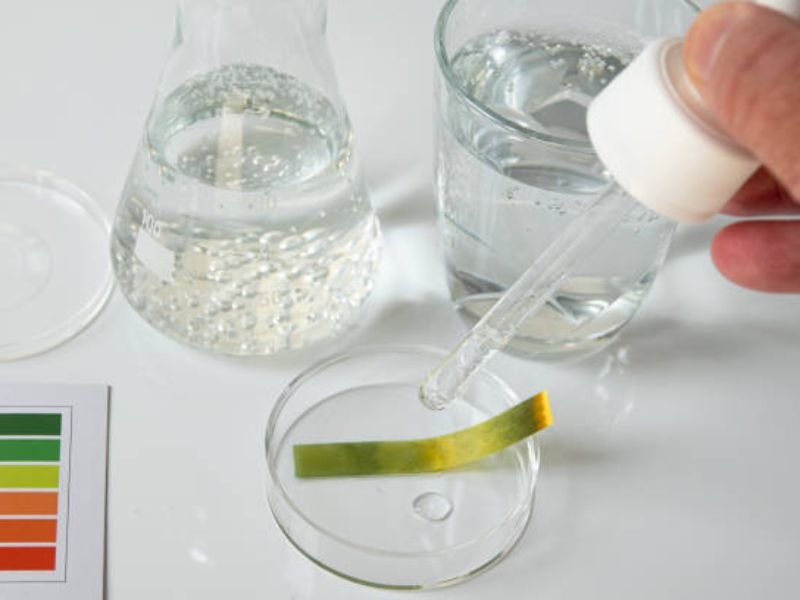
- For those who are new to the world of soil testing or simply need a quick check, soil test strips can be an invaluable tool. These strips are dipped into a soil-water solution and then provide a color change based on the pH level of the sample.
- They are easily available, straightforward to use, and offer immediate results. While they may not provide the depth of information that other methods might offer, they’re perfect for a swift pH assessment, helping bonsai cultivators make quick decisions on whether to adjust the soil’s acidity or alkalinity.
Advanced Testing For Nutrient Uptake & CEC
- For a more in-depth understanding of your bonsai soil, utilizing comprehensive soil testing kits or services, a crucial aspect of soil testing for bonsai, is the way to go. These tests can provide detailed insights into the soil’s nutrient content, helping you pinpoint any deficiencies or excesses.
- Along with nutrient levels, some advanced tests can also determine the soil’s cation exchange capacity (CEC). As discussed earlier, CEC provides insights into the soil’s ability to hold onto and supply nutrients to the bonsai tree, crucial for its growth and health.
- These comprehensive tests might involve sending a soil sample to a specialized lab or using a more advanced home testing kit. The results provide a clear picture of the soil’s properties, allowing for precise adjustments and interventions.
These testing methods offer clarity and direction. While a quick pH check with test strips might suffice for some, the depth and detail provided by comprehensive tests are unmatched.
Benefits And Limitations Of Each Testing Method
Before delving into the precise art of crafting the perfect soil mix for your bonsai, understanding the strengths and shortcomings of each soil testing method can guide your approach.
Soil Test Strips
- Benefits: Quick, easy to use, and cost-effective. Offers immediate pH level results, making them suitable for on-the-spot decisions regarding soil suitable for your bonsai.
- Limitations: Limited to pH testing. Doesn’t provide detailed information on nutrient content or cation exchange capacity.
Advanced Testing For Nutrient Uptake & CEC
- Benefits: Provides a comprehensive analysis of the soil, including nutrient levels and cation exchange capacity. Allows for precise interventions and soil adjustments based on detailed data.
- Limitations: More expensive and may require sending samples to a specialized lab. Takes longer to get results compared to test strips.
Crafting The Perfect Soil Mix For Your Bonsai
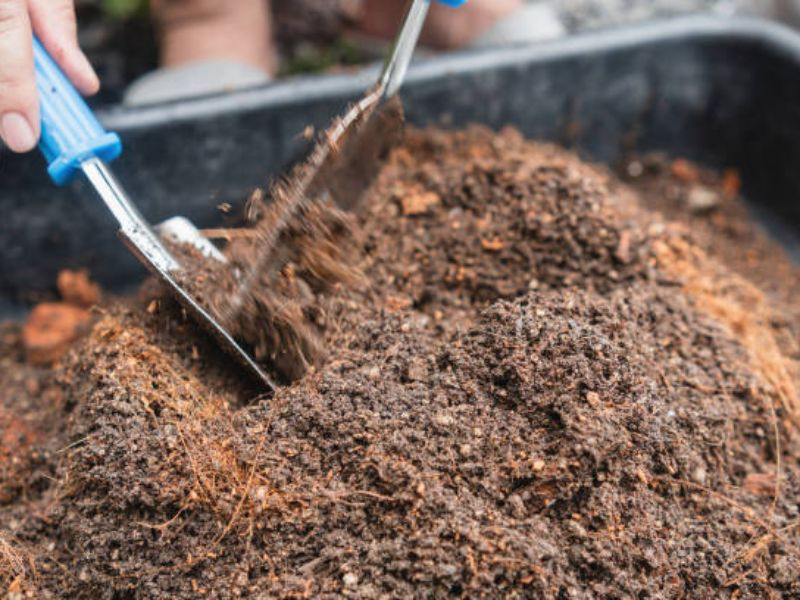
Achieving the perfect soil mix for your bonsai is akin to crafting a gourmet meal; each ingredient plays a role, and the balance is paramount. But how do you achieve this balance?
Factors Based On Different Bonsai Species
Every bonsai species has its unique requirements. For instance, a pine might thrive in slightly acidic conditions, while a juniper may prefer neutral soil. Researching the specific needs of your bonsai species can inform your soil mix decisions. Factors like ideal pH level, nutrient content, and moisture retention should be considered.
Balancing Various Proportions Of Soil Components
The best bonsai soil mixes often contain a balance of organic and inorganic components. Organic matter, such as pine bark or peat moss, retains moisture and provides nutrients. In contrast, inorganic materials like lava rock, akadama, or pumice ensure good drainage.
Finding the right proportion of these components can depend on your specific bonsai species, local climate conditions, and your watering routine.
When To Fine-Tune Your Bonsai Soil Mix
Continuous observation is key. If you notice your bonsai showing signs of stress, like yellowing leaves or stunted growth, it might be time to re-evaluate your soil mix.
Seasonal changes can also influence your bonsai’s soil needs. A mix that works in summer may not be ideal for winter, and periodic adjustments can cater to these seasonal requirements.
Monitoring And Adjusting Soil Over Time
A bonsai tree, like all living things, communicates its needs, often subtly. As caretakers, it’s crucial to stay attuned to these signals, especially those indicating soil-related issues, and take timely action.
Here’s how to effectively monitor and adjust your bonsai’s soil over time:
Recognizing Signs Of Soil Issues
- Yellowing Leaves: While several factors can cause this, one common reason is a pH imbalance, which affects the tree’s ability to absorb nutrients.
- Stunted Growth: If your bonsai isn’t growing as expected or shows signs of weak growth, it could be due to a lack of essential nutrients in the soil.
- Root Rot: This is an indication of poor drainage, often caused by a soil mix that retains too much moisture.
- Leaf Drop or Browning: These can be signs of both under-watering and over-watering, both of which can be influenced by the soil’s composition and drainage capabilities.
Methods To Adjust pH And Nutrient Content
- Lime or Wood Ash: These can be used to raise the soil’s pH if it’s too acidic.
- Sulfur or Aluminum Sulfate: Ideal for lowering the pH if your soil is too alkaline.
- Fertilization: Depending on the deficiency identified through soil testing for bonsai, you can use specific fertilizers to address the needs of your tree. For example, a nitrogen-rich fertilizer can boost growth, while one rich in phosphorus can enhance root development.
The Role Of Water Supply In Maintaining Soil Quality
- Water Quality: Hard water can gradually make the soil more alkaline, while soft water might not supply all the necessary minerals. It might be beneficial to occasionally use rainwater or distilled water to balance things out.
- Watering Frequency: Over-watering can lead to root rot, while under-watering can cause the soil to become too dry, both affecting nutrient uptake. The soil composition plays a role in how often and how much you should water. A well-draining soil mix will require more frequent watering than one that retains moisture.
- Watering Depth: Ensure you’re watering deeply enough that the moisture reaches the lower roots, promoting healthy growth and nutrient absorption.
While the initial soil mix sets the stage for your bonsai’s growth, it’s the continuous monitoring and adjusting that ensures its sustained health.
Common Misconceptions About Bonsai Soil
As this miniature tree art form garners more attention, there’s an influx of information, and not all of it is accurate. Bonsai soil, a fundamental aspect of bonsai care, is often surrounded by misconceptions. Let’s address some of the common myths and set the record straight.
Bonsai Soil Is Overly Complicated
- Misconception: Many beginners assume that creating a bonsai soil mix is a highly intricate process reserved for experts.
- Reality: While bonsai soil does have its unique requirements, it’s not as daunting as it’s made out to be. With a basic understanding of the tree’s needs and the properties of different soil components, anyone can craft an effective mix. Yes, it might be “a bit complicated” compared to merely scooping up garden soil, but the process of selecting the right soil component is logical and rewarding.
Regular Garden Soil Is Suitable For Bonsai
- Misconception: Some believe that because bonsais are trees, they can thrive in the same soil as garden trees.
- Reality: Bonsai trees are cultivated in shallow pots, restricting their root growth. Garden soil tends to compact over time, especially in these conditions, which can hinder the tree’s ability to absorb nutrients and water. Moreover, it might not offer the drainage bonsais required, potentially leading to root rot.
Potting Soil Is An Ideal Substitute For Bonsai Soil
- Misconception: If not garden soil, then surely potting soil should work, right?
- Reality: While potting soil is formulated for potted plants, bonsai trees have specific needs that typical potting mixes might not cater to. Bonsai soils usually have a balance of organic and inorganic components, ensuring good aeration and drainage. Most potting soils retain a lot of moisture and may lack the necessary drainage for bonsai.
While bonsai cultivation does demand a certain level of precision and knowledge, it shouldn’t be seen as an insurmountable challenge.
Bonsai Soil Troubleshooting: Common Issues And Solutions
Bonsai soil troubleshooting is essential for enthusiasts and professionals alike, as the foundation of a thriving bonsai begins with the right soil. This petite and delicate art form, deeply rooted in tradition, can encompass a myriad of tree species, each with its distinct soil requirements.
From deciduous trees that shed their leaves annually to evergreens that remain lush year-round, understanding the nuances of each species is crucial.
Without proper soil, even the most expertly crafted bonsai can falter, underscoring the significance of addressing and rectifying soil issues.
Understanding Bonsai Soil Components
The world of bonsai, with its meticulous attention to detail, extends its precision to the very soil in which these miniaturized trees are planted. Here, we’ll dissect what sets bonsai soil apart and explore its unique components.
Difference Between Bonsai Soil And Regular Potting Soil
While both bonsai soil and regular potting soil serve the foundational purpose of supporting plant growth, their composition and objectives differ significantly.
Regular potting soil is designed to retain moisture and provide a universally adequate environment for a variety of plants. In contrast, bonsai soil is tailored to meet the specific needs of bonsai trees, ensuring rapid drainage and minimizing the risk of root rot—a prevalent issue in the bonsai world.
Components Of A Typical Bonsai Soil Mix
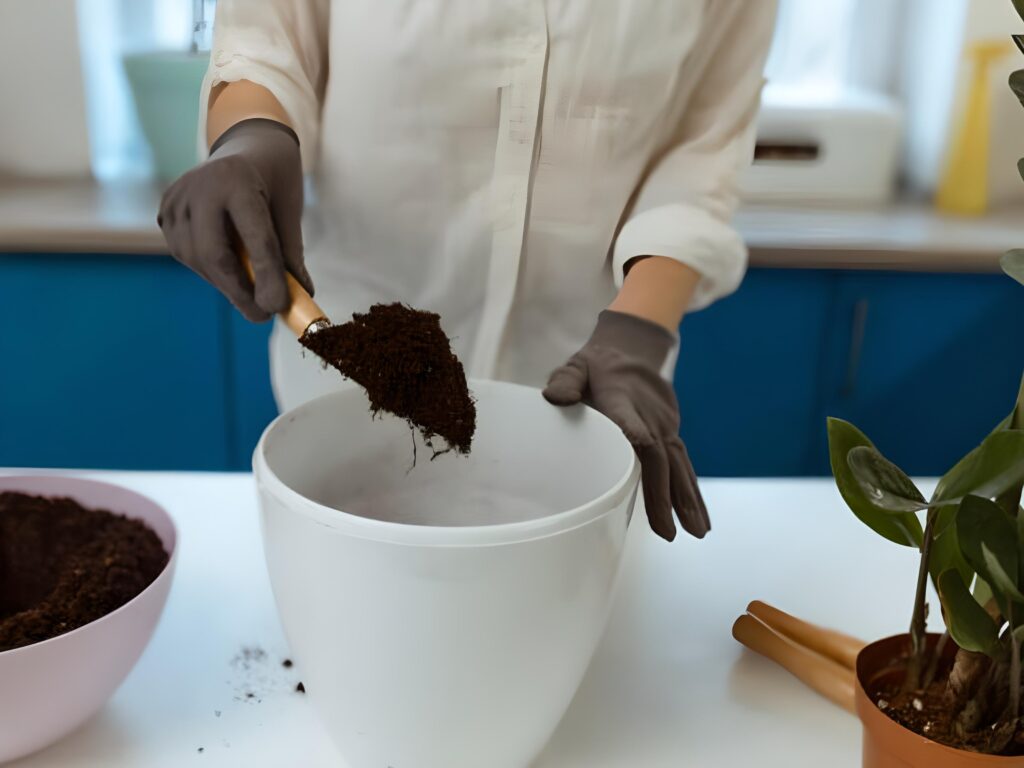
A standard bonsai soil mix doesn’t merely consist of garden soil. It’s a strategic blend of multiple elements, each serving a particular purpose:
- Organic soil components: These often include finely sifted pine bark or compost. They aid in retaining moisture and provide essential nutrients for the bonsai tree.
- Inorganic soil components: Examples are akadama, lava rock, and pumice. These materials ensure proper aeration, facilitating the tree’s roots to breathe, and assist in rapid water drainage, preventing the onset of diseases like root rot.
Organic Soil Vs. Inorganic Soil
In bonsai soil troubleshooting, understanding the differences between organic and inorganic soils is crucial.
Organic soils derive from decomposed plant matter, offering moisture retention and nutrient enrichment. In contrast, inorganic soils, while not inherently nutrient-rich, excel in providing structure, drainage, and aeration. In the world of bonsai, a blend of these two ensures the tree receives the nutrition it needs while also benefiting from optimal water management and aeration.
Role Of Proper Aeration And Water Retention
Aeration is vital for a bonsai tree’s root system, allowing the roots to access fresh air and fostering healthy root growth. Without proper aeration, roots can become stifled, leading to stunted growth or even root rot.
On the other hand, adequate water retention ensures that the bonsai tree remains hydrated between watering sessions. Striking a balance between these two is the key to a flourishing bonsai.
Common Bonsai Soil Problems And Their Indications
Maintaining a bonsai tree involves understanding the myriad of issues that can affect its health, starting from the soil itself. Let’s explore common soil-related problems that bonsai enthusiasts might encounter.
Over Watering And Water Retention
Overwatering is among the most common missteps in bonsai care. While it’s crucial to ensure the tree gets enough moisture, excessive water can be detrimental.
- Signs and effects on the tree’s roots: Soggy soil, yellowing leaves, and a stunted growth pattern are tell-tale signs of overwatering. The tree’s roots, instead of being firm and white, become brownish and mushy.
- The risk of root rot: Continual exposure to excessive moisture creates an environment conducive for fungal growth, leading to root rot, a condition where the roots decay, depriving the bonsai of essential nutrients.
Poor Aeration
Healthy soil should not just retain water but also allow for proper aeration.
- Consequences for the root system and root growth: Compact or non-porous soil suffocates the root system, hampering its growth. This can lead to a weakened tree that’s susceptible to diseases.
- Importance of fresh air to the bonsai: Roots require oxygen to metabolize nutrients. Without fresh air, the roots can’t function effectively, leading to a gradual decline in the tree’s health.
Unsuitable Soil Composition
Not all bonsai are created equal. Different species have distinct soil needs, and these can also vary based on whether the bonsai is kept indoors or outdoors. While many enthusiasts might be tempted to use premixed bonsai soil for convenience, it’s essential to understand that these ready-made mixes may not cater to the specific needs of every bonsai tree species.
- Distinguishing between outdoor bonsai and indoor bonsai needs: Outdoor bonsais are accustomed to fluctuating environmental conditions and often require a soil mix that can handle these variations. Indoor bonsais, on the other hand, need soil that compensates for the relatively stable indoor conditions.
- Impacts on specific tree species: Some tree species prefer acidic soil, while others thrive in alkaline conditions. Using a mismatched soil can lead to suboptimal growth or even tree distress.
Lack Of Nutrients
While bonsai soils prioritize drainage and aeration, they must also provide the tree with essential nutrients.
- How garden soil differs from bonsai soil in nutrient content: Garden soil is often nutrient-rich but may lack the drainage properties bonsais require. Bonsai soil, while well-draining, might need periodic fertilization to replenish nutrients.
- Signs of nutrient deficiencies in trees: Discolored leaves, reduced growth, and weak branches are indicative of potential nutrient deficiencies.
Pest And Disease Infestation
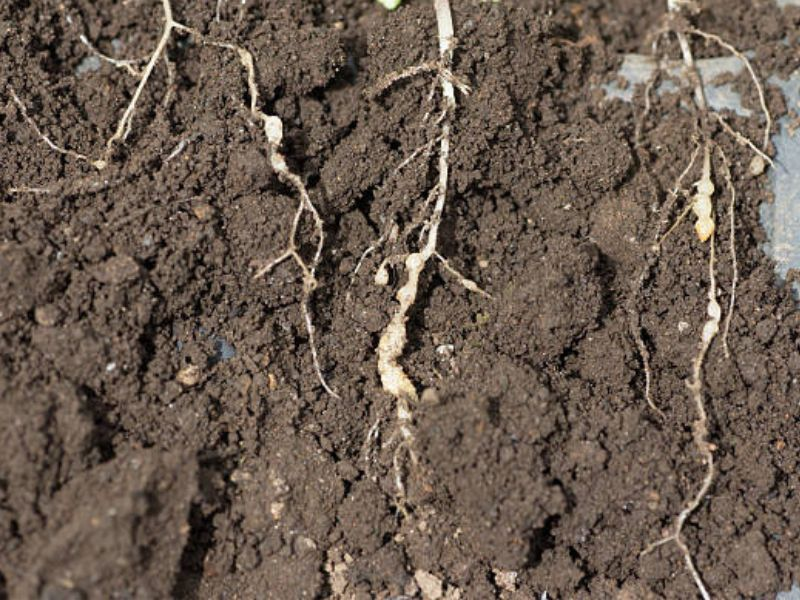
A well-maintained bonsai tree can still fall prey to pests and diseases, many of which can take root in the soil itself.
- Common pests that affect bonsai tree’s roots: Root aphids, nematodes, and certain types of fungi can directly attack the bonsai’s root system, leading to a myriad of health issues.
- How soil can harbor diseases: Overly damp soil or soil that’s infested with pathogens can act as a breeding ground for diseases, affecting not just the roots but the entire tree.
Solutions To Bonsai Soil Issues
Navigating the intricacies of bonsai care is a rewarding journey. At its core, understanding and rectifying soil issues is paramount. Below are tried-and-true solutions tailored for various bonsai soil challenges.
Adjusting Watering Techniques
While bonsai trees appreciate moisture, they despise waterlogged conditions. Modifying your watering techniques can significantly influence their health.
- Monitoring soil dampness: Before reaching for the watering can, use your finger or a moisture meter to gauge the soil’s wetness. This prevents over-watering and ensures you water only when necessary.
- Understanding the water needs of specific tree species: In bonsai soil troubleshooting, recognizing that trees, like people, have individual needs is essential. Some tree species might be thirstier than others, and understanding this nuance can be instrumental in their care.
Employing the soak and dry method: Allow the bonsai soil to dry out completely between watering. This method keeps the root system healthy and minimizes the risk of root rot.
Improving Soil Aeration
A well-aerated soil is vital for the tree’s root system to breathe and grow.
- Using gritty components: Introducing inorganic materials like lava rock, pumice, or akadama can significantly enhance aeration, ensuring the roots get adequate fresh air.
- Repotting regularly: Just as we outgrow our clothes, bonsai trees outgrow their pots. Regular repotting ensures the root system isn’t confined and choked.
- Root pruning: Periodically trimming the roots not only manages their size but also stimulates new, healthier growth.
Tailoring The Soil Mix
The right soil mix is a game-changer for any bonsai tree.
- Understanding the needs of indoor vs. outdoor bonsai: Indoor bonsais, shielded from external weather fluctuations, might need a faster-draining mix compared to their outdoor counterparts.
- Customizing mixes based on tree species: Deciduous trees, for example, might have a penchant for more organic soils, while pine trees could thrive with inorganic elements.
- Consulting experts at garden centers: These seasoned professionals can provide insights and recommendations on optimizing your bonsai soil mix.
Enhancing Soil Nutrients
A nutrient-rich soil is the foundation of a thriving bonsai.
- Organic composts: Introducing well-decomposed compost can infuse the soil with vital nutrients, promoting healthier tree growth.
- Balanced fertilizers: Utilize bonsai-specific fertilizers that deliver a harmonious blend of essential nutrients.
- Regularly checking for signs of deficiency: Stay vigilant. Signs like yellowing leaves or stunted growth could indicate a soil nutrient imbalance.
Pest And Disease Management
Even with the best care, bonsais might occasionally face pest or disease threats. Here’s how to combat them:
- Soil sterilization: Before repotting, consider heating the soil. This can eradicate harmful pathogens, setting up a clean environment for the bonsai.
- Natural repellents: Embrace nature’s warriors. Introduce natural predators, such as ladybugs, to keep pest populations in check.
- Using organic, bonsai-friendly pesticides: Ensure that any pesticide used is tailored for bonsais. It should be potent against pests but gentle on the tree.
Tips On Selecting The Right Bonsai Pot
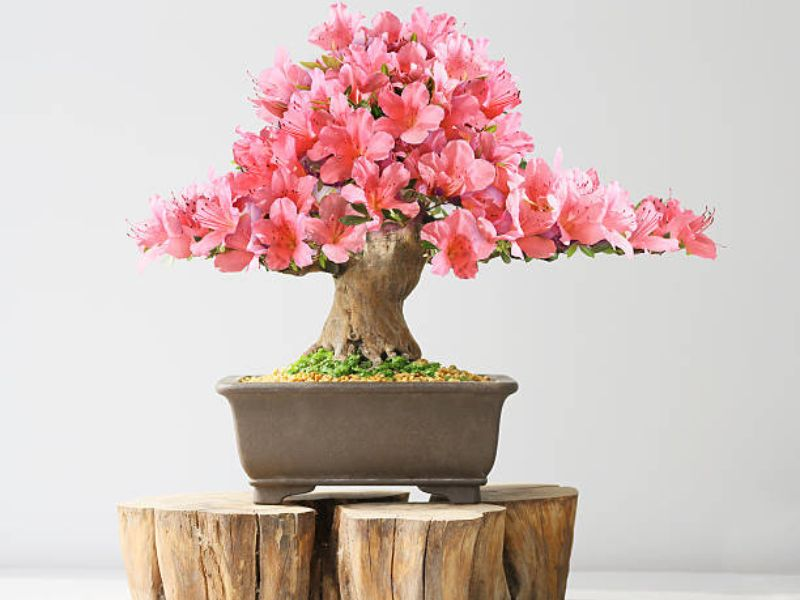
The pot, often overlooked, plays a pivotal role in the bonsai’s overall health and presentation. Here’s a deep dive into the symbiotic relationship between the bonsai pot and soil and how to choose the right pot for various tree species.
The Bonsai Pot And Soil: An Intertwined Relationship
Much like a frame to a painting, the bonsai pot not only serves an aesthetic purpose but also influences the health and growth of the tree.
The type of pot you select can impact:
- Water Retention and Drainage: An important aspect of bonsai soil troubleshooting involves considering the pot’s design, especially its drainage holes, as it directly influences how water moves through the bonsai soil. Too few or small holes can lead to waterlogging, risking root rot. Conversely, too many or large holes might cause the soil to dry out too quickly, especially in warm climates.
- Root Growth: Bonsai pots confine the tree’s roots, guiding their growth. This confinement is what helps the tree maintain its miniature size. The depth and width of the pot determine how the root system develops, influencing the tree’s stability and health.
- Aesthetic Harmony: Bonsai is as much about beauty as it is about botany. The pot’s color, shape, and design should complement the tree, creating a harmonious display that’s pleasing to the eye.
Guidelines On Choosing Pots For Various Bonsai Tree Species
With countless bonsai pots available, selecting the right one can feel overwhelming.
Here are some guidelines tailored for various tree species:
- For Deciduous Trees: Generally, deciduous trees, with their sprawling branches and vibrant foliage, pair well with oval or rectangular pots. These shapes offer the root system adequate space. A softer color palette can also enhance the visual appeal, especially during the fall when leaves change color.
- For Coniferous Trees: Given their upright nature, coniferous trees, such as pines, tend to thrive in deeper, narrower pots. The depth provides the roots with ample space to grow downward, lending stability to these tall trees. Earthy tones or darker shades can complement their green foliage.
- For Flowering and Fruiting Trees: These bonsai variants, with their bursts of color, usually resonate with pots that have a softer, rounded shape. The curves mirror the organic flow of the blossoms and fruits. Subtle hues ensure the pot doesn’t overshadow the tree’s natural beauty.
- Considering Growth Rate: Fast-growing tree species might require repotting more frequently. Opting for a slightly larger pot can give the tree more room to grow, extending the time between repotting sessions.
Remember, while these are general guidelines, bonsai is a personal journey. The pot you choose should resonate with your vision for the tree. Consulting experts at garden centers, attending bonsai exhibitions, or joining bonsai clubs can provide additional insights, ensuring your tree finds its perfect home.
Dedication To Bonsai: Continuous Learning And Adjustments
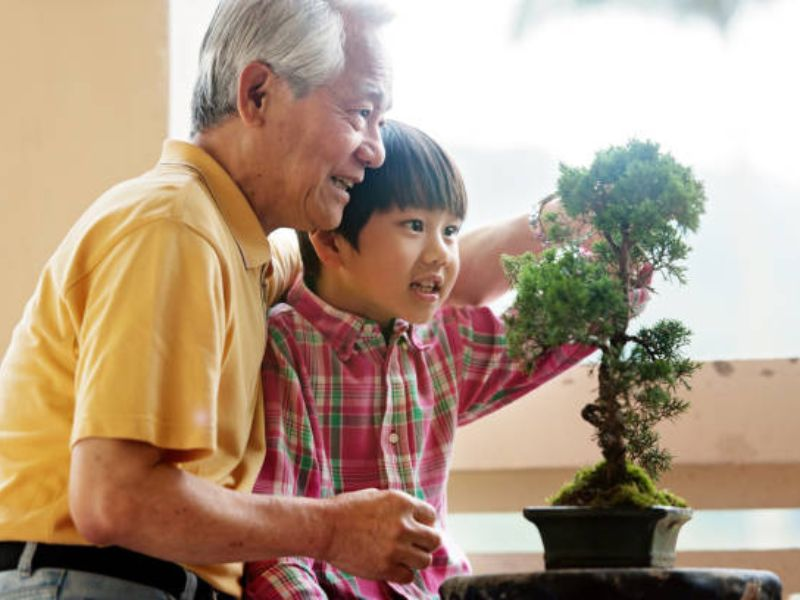
As with many art forms, the journey with bonsai is one of continuous discovery and learning, with the tree often serving as both a teacher and a canvas. Here’s a deep dive into the importance of dedication, learning, and the inevitable adjustments that come with it:
The Lifelong Bond
- The Bonsai’s Lifecycle: Bonsai trees, despite their miniature stature, can live for many decades, even centuries. Their growth, seasons of bloom, and dormant periods offer a window into nature’s rhythm. As caretakers, we must sync with this rhythm, adjusting our care techniques as the tree matures.
- Emotional Investment: Every twist in a bonsai’s branch, every leaf’s fall, and every new bud symbolizes the effort, patience, and love invested. This connection deepens with time, making the journey truly lifelong.
The Learning Curve
- Mistakes are Inevitable: Whether it’s over-pruning, misjudging the soil’s pH, or watering irregularities, mistakes are a part of the bonsai journey. However, they offer invaluable lessons, refining our skills for the future.
- Stay Updated: The world of bonsai is ever-evolving. New research, techniques, and tools emerge regularly. Being open to new knowledge ensures that our bonsai care methods are both effective and innovative.
Adaptability And Adjustments
- Listening to the Tree: Bonsai trees, in their silent, serene way, communicate their needs. The yellowing of leaves, a slowdown in growth, or unexpected leaf drop are cues urging adjustments in care.
- Fine-tuning the Environment: As we progress in our bonsai journey, we realize the importance of creating a perfect environment for our tree. This might mean tweaking the soil mix, adjusting the watering schedule, or even altering the tree’s placement to get the right amount of light.
Community And Shared Wisdom
- Join Bonsai Groups: Sharing experiences, successes, and failures with fellow enthusiasts can be enlightening. The collective wisdom of a group can often offer solutions to individual challenges.
- Attend Workshops and Seminars: These gatherings are hubs of knowledge, where experts share their insights and latest techniques. They’re invaluable for both beginners and seasoned bonsai enthusiasts.
Dedication to bonsai, including practices like soil testing for bonsai, is a blend of passion, patience, and persistent learning. It’s about embracing the journey, with its highs and lows, and celebrating the beautiful dance of nature and nurture. Every bonsai tree is a story, and with dedication to every aspect, including understanding the soil needs through soil testing, it’s a story that gets richer with each passing day.





0 Comments